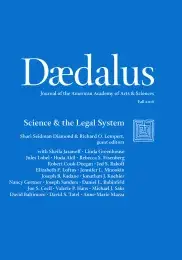The Uncertain Future of Forensic Science
Forensic science is at a crossroads. In the last two decades, often-used forms of pattern evidence, such as fingerprint, tool mark, and bite mark identification, have faced significant criticism for lacking adequate scientific validation or proven reliability. Is this the beginning of a sea change, signaling the rise of a science-based, empirically grounded approach to these forms of evidence, both in the courtroom and in the crime laboratory? Or has the increased attention produced Band-Aids rather than meaningful and lasting cures? This essay argues that the current state of forensic science reform is both “half empty” and “half full.” Looking first at bite mark evidence, then at modifications in the language used by forensic scientists for their courtroom testimony, and, finally, at the creation and the elimination of the National Commission on Forensic Science, this essay argues that we have thus far seen modest and meaningful – but far from adequate or transformative – reform. Our best hope for sustained, substantial changes necessary for improving forensic science evidence within our system of justice requires the creation of another national commission or other institutional body, made up of both research scientists and other institutional stakeholders, and situated as to prevent “capture” by either forensic practitioners or advocates within our adversarial system.
Forensic science evidence is at a crossroads. Over the last two decades, forensic science claims and methods have been subject to a growing chorus of academic and scientific criticism. Much of the criticism has focused on the deeply inadequate research foundations of many forms of regularly used pattern identification evidence, including latent fingerprints, tool marks, bullets, bite marks, documents, and signatures. Important reports by experts and from authoritative institutional bodies such as the National Academy of Sciences (NAS) and the President's Council of Advisors on Science and Technology (PCAST) have forcefully expressed concerns about the reliability and validity of these and other forensic science techniques like blood spatter evidence and arson determinations. This attention and criticism have expanded public awareness and spurred nontrivial reforms and meaningful institutional and research engagements. Still, as of yet, there has been little fundamental change in how forensic science is used in courtrooms around the country.
This present reality – a host of meaningful but mostly superficial changes alongside a still-faltering trickle of serious research – permits two radically different stories to be told about the likely future of the forensic sciences over the next decade or two. It would be possible (though just barely) to tell a “momentum” story, suggesting that we are on the cusp of an increasingly empirically based, science-driven approach to the validation and use of these influential kinds of evidence. But an equally possible – and, in my view, more realistic – story would characterize the changes made thus far as genuine, but limited and sputtering efforts at reform, unlikely to operate as gateways toward necessary substantial transformations, at least on the near horizon. . . .
Access the full issue here.
